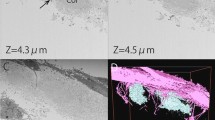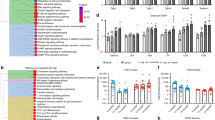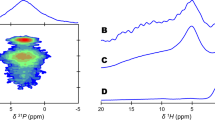Abstract
EARLY investigators1–4 interested in the physiology of bone have described filamentous, rod- and granular-shaped mitochondria in osteoblasts from a variety of animals both in vivo and in vitro. An apparent relation between the number of mitochondria and osteoblastic activity was also pointed out. Pritchard5 arrived at the same conclusion. Within the past decade numerous biochemists have revealed a good many of the substrates and enzymes involved with intermediary metabolism associated with mitochondria. More recently, cytochrome oxidase and succinic dehydrogenase activity of the periosteum was studied in normal and traumatized rat femora from birth to old age6,7. The results showed high levels of activity of respiration becoming more elevated at the period of maximum rate of bone formation. Following this period of intense activity (5 weeks of age), a sharp drop occurred to a low level, which was maintained throughout the life of the animal. Trauma to the femora stimulated a response of respiratory activity, however, the response becoming progressively less with increasing age. Changes in respiratory enzyme-levels are fundamental to the activity of cells in general, because these enzymes are part of the aerobic hydrogen transport system from which rich-energy-bond phosphate is generated.
This is a preview of subscription content, access via your institution
Access options
Subscribe to this journal
Receive 51 print issues and online access
$199.00 per year
only $3.90 per issue
Buy this article
- Purchase on Springer Link
- Instant access to full article PDF
Prices may be subject to local taxes which are calculated during checkout
Similar content being viewed by others
References
Deineka, D., Anat. Anz., 46, 97 (1914).
Dubreuil, G., Arch. d'Anat. Micros., Paris, 15, 53 (1914).
Fell, H. B., J. Morph., 40, 417 (1925).
Hill, J. C., Arch. Exp. Zellforsch. Gewebez., 18, 496 (1936).
Pritchard, J. J., J. Anat., 86, 259 (1952).
Tonna, E. A., J. Gerontol., 13, 14 (1958).
Tonna, E. A., Nature, 181, 486 (1958).
Hogeboom, G. H., Claude, A., and Hotchkiss, R. D., J. Biol. Chem., 165, 615 (1946).
Author information
Authors and Affiliations
Rights and permissions
About this article
Cite this article
TONNA, E., PILLSBURY, N. Changes in the Osteoblastic and Mitochondrial Population of Aging Periosteum. Nature 183, 337–338 (1959). https://doi.org/10.1038/183337a0
Issue Date:
DOI: https://doi.org/10.1038/183337a0
This article is cited by
-
Succinate and its G-protein-coupled receptor stimulates osteoclastogenesis
Nature Communications (2017)
-
Mitochondrial epigenetics in bone remodeling during hyperhomocysteinemia
Molecular and Cellular Biochemistry (2014)
Comments
By submitting a comment you agree to abide by our Terms and Community Guidelines. If you find something abusive or that does not comply with our terms or guidelines please flag it as inappropriate.



